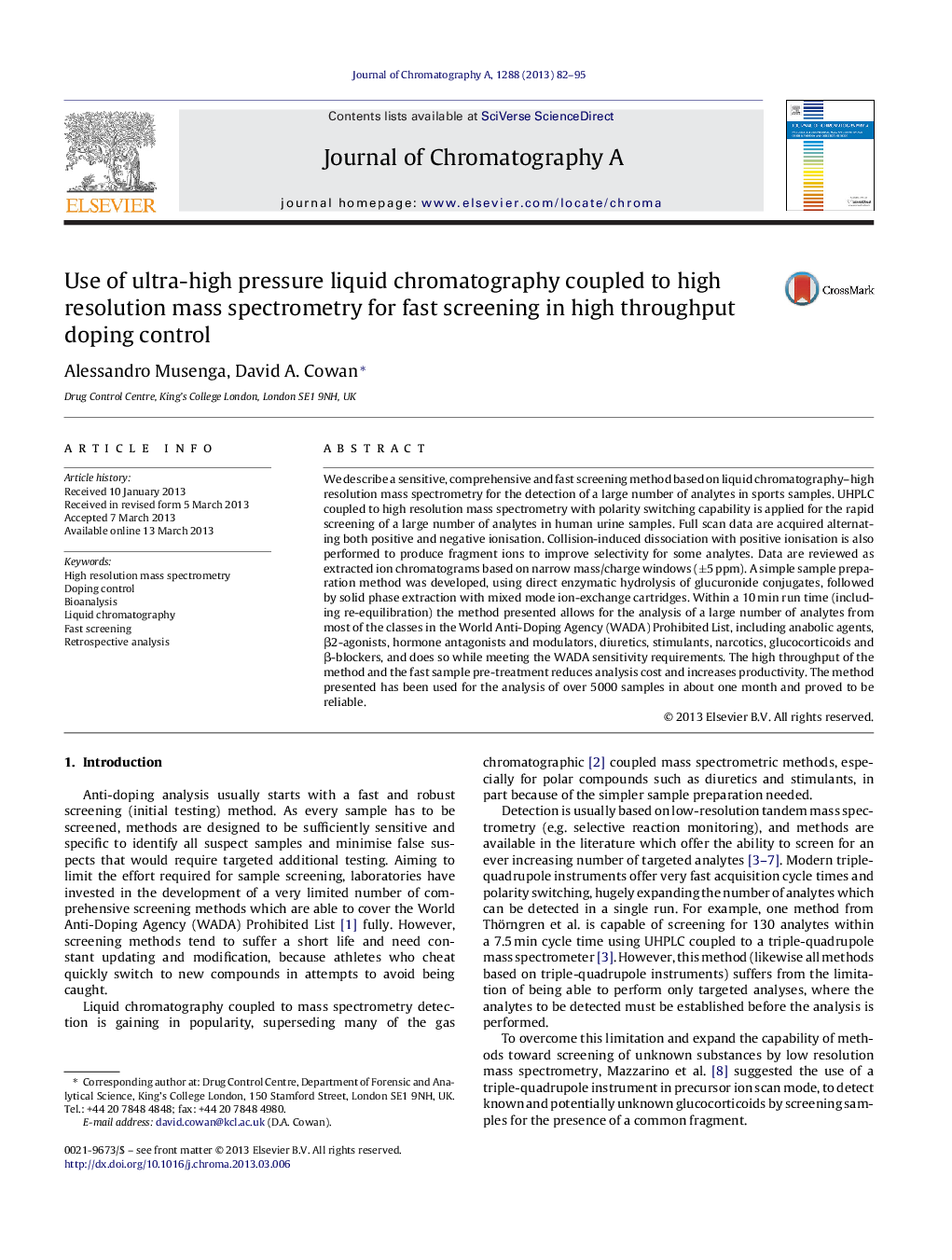| کد مقاله | کد نشریه | سال انتشار | مقاله انگلیسی | نسخه تمام متن |
|---|---|---|---|---|
| 1200285 | 1493638 | 2013 | 14 صفحه PDF | دانلود رایگان |

• Fast simple discriminating screen for almost 200 substances prohibited in sport.
• Comprehensive data capture permits detection of new misused substances.
• High resolution mass spectrometry at 5 ppm mass accuracy simplifies data review.
• Data obtained is maximised by use of positive, negative ionisation and CID.
• First in the world for use at an Olympic Games evidencing reliability of method.
We describe a sensitive, comprehensive and fast screening method based on liquid chromatography–high resolution mass spectrometry for the detection of a large number of analytes in sports samples. UHPLC coupled to high resolution mass spectrometry with polarity switching capability is applied for the rapid screening of a large number of analytes in human urine samples. Full scan data are acquired alternating both positive and negative ionisation. Collision-induced dissociation with positive ionisation is also performed to produce fragment ions to improve selectivity for some analytes. Data are reviewed as extracted ion chromatograms based on narrow mass/charge windows (±5 ppm). A simple sample preparation method was developed, using direct enzymatic hydrolysis of glucuronide conjugates, followed by solid phase extraction with mixed mode ion-exchange cartridges. Within a 10 min run time (including re-equilibration) the method presented allows for the analysis of a large number of analytes from most of the classes in the World Anti-Doping Agency (WADA) Prohibited List, including anabolic agents, β2-agonists, hormone antagonists and modulators, diuretics, stimulants, narcotics, glucocorticoids and β-blockers, and does so while meeting the WADA sensitivity requirements. The high throughput of the method and the fast sample pre-treatment reduces analysis cost and increases productivity. The method presented has been used for the analysis of over 5000 samples in about one month and proved to be reliable.
Journal: Journal of Chromatography A - Volume 1288, 3 May 2013, Pages 82–95